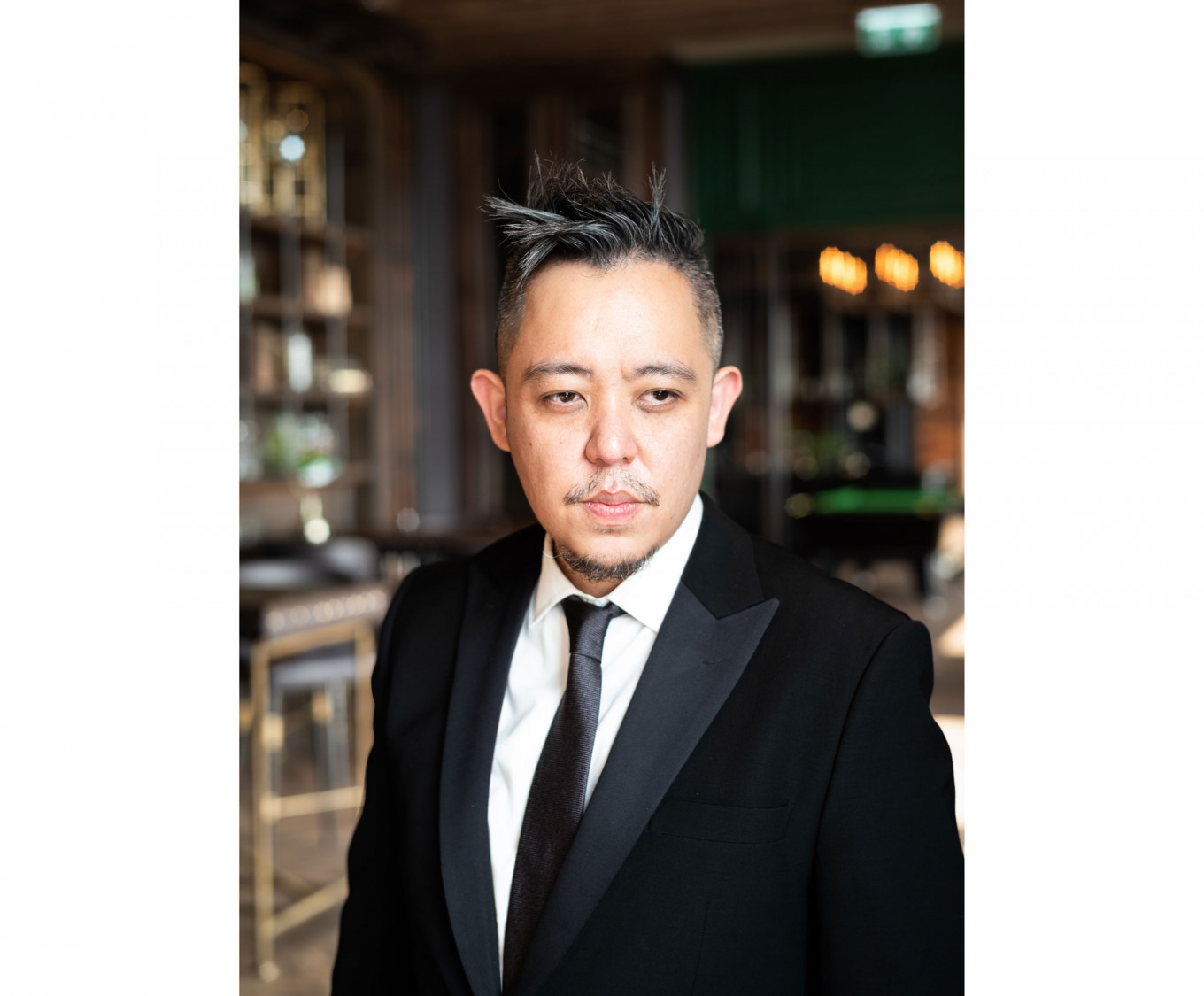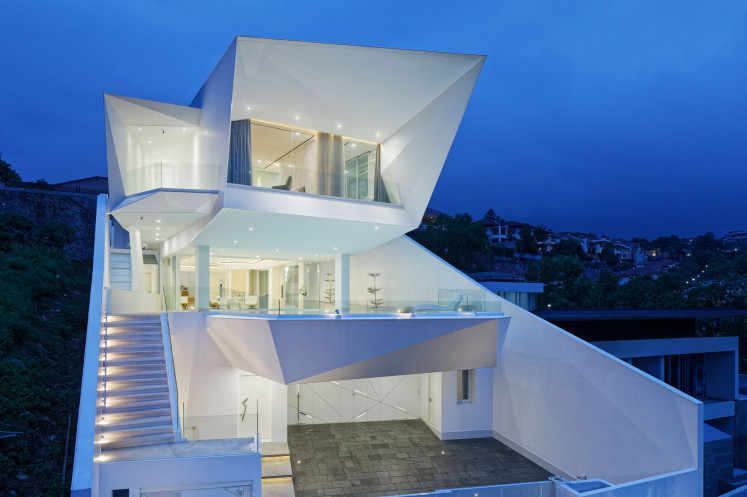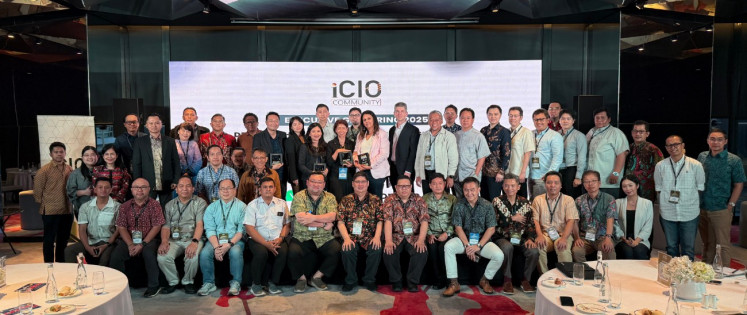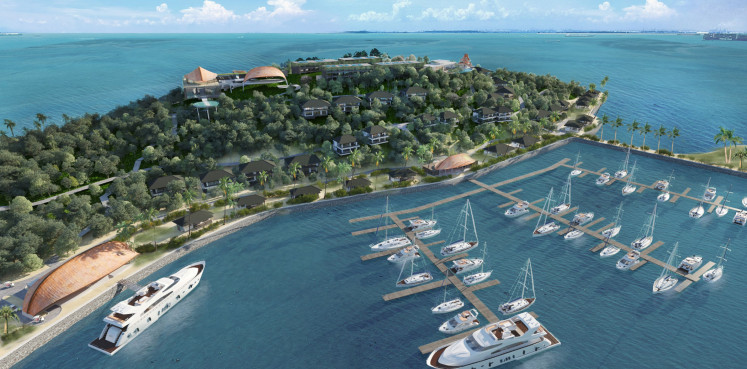Popular Reads
Top Results
Can't find what you're looking for?
View all search resultsPopular Reads
Top Results
Can't find what you're looking for?
View all search resultsArchitect Revano Satria highlights the personal in design
After obtaining his master degree at the Architectural Association School of Architecture in London, Revano returned to Indonesia to establish RSI Group, an architecture and interior design company with seven offices around the world.
Change text size
Gift Premium Articles
to Anyone
As the saying goes, “home is where the heart is”. But what is it that makes a home different from just a building?
Architecture. Ask any architect and they would say the same, including RSI Group founder Revano Satria.
After obtaining his master degree at the Architectural Association School of Architecture in London, Revano returned to Indonesia to establish RSI Group, an architecture and interior design company with seven offices around the world. Over the course of his career, Revano’s designs have won him a number of awards, the latest being Z Line House in Semarang, Central Java, which garnered him the Platinum Design Award from A’ Design Award as well as the Five Star Award from the International Property Awards and the Asia Pacific Property Awards.
Revano is currently involved in several major projects, including Indonesian National Palace.
According to Revano, architecture is an interesting subject because, along with its deep connection to the individual, it has also been the cornerstone of human civilization over the course of history.
“What this means is that [architecture] has a very important role in shaping the life of a civilization, while it is also equally appreciated and enjoyed by the public at large,” he told The Jakarta Post.
Continuing, he notes that architecture has an immensely important role in designing a home. Without the knowledge of basic architecture like space and circulation, both human and air, myriad problems will affect the function of a home.
“In the end, the balance between form and function depends on the agenda of each architect or homeowner. All things in balance will of course be beneficial, but this balance is never the same for each architect. It depends on their individual understanding and agreement,” he says.
Yet, because the COVID-19 pandemic has forced many people to work from home, it has also put renewed focus on our dwellings, whether it is as simple as applying a new coat of paint or even a complete renovation to accommodate new habits.
What is important, Revano notes, is that the homeowner understands design in terms of their own needs, as each individual possesses unique perspectives on space, color and smell.
“The most basic [criteria] is that the space must support the right function. For example, [in the context of] the need to work from home, a workspace will generally require computer equipment, adequate access to wireless signals, natural lighting from morning to afternoon and artificial lighting for nighttime,” he explains.
With the pandemic in mind, the circulation of fresh air is necessary in order to maintain good oxygen levels, although everything else would obviously be designed according to the homeowner’s wants and needs.
Revano also highlights the recent rise in awareness for architecture and home design, and that it is only natural for many aspects to be taken into consideration as we spend more time in a particular space.
“The architecture and interior design sectors have seen highs and lows in terms of the type of architecture. Commercial sectors like public space and retail design have been seeing a recent downward trend, but housing has seen a rapid rise as many decide to invest in residential properties,” he says.
Also natural is the emergence of trends. Like the fashion industry, architecture and home design have their own trends, such as the latest seasonal color. However, Revano says these trends do not have as rapid a turnover as on the catwalks, as time and effort has greater significance in purchasing a property than in snagging a fashion item fresh off the runway.
Instead, many regions have their own take on architecture and home decor, from the red-tiled roofs of the Mediterranean to the sleek and minimalist houses in East Asia.
What about Indonesia, with its diverse cultures?
“From what I have seen, design in Indonesia is connected to love of craftsmanship: something authentic, unique, filled with layers and texture, yet at the same time relaxed,” says Revano.
“This is perhaps a reflection of our characteristics as a nation that is composed of many tribes, traditions and cultures. Popular designs tend to be something homey, relaxing and welcoming, which in turn is one of the mainstays of Indonesian design trends, even though there are exceptions.”
Ultimately, the best piece of advice Revano can share with homeowners is to never follow the trend, as each home is personal.
“Pick something that speaks to your heart, as architecture is long-lasting, even reaching centuries,” he says.
“I always tell our clients to never base their architectural decisions on temporary trends and the fear of missing out. I tell them to feel confident in their own choices, as ultimately, they are the ones who will live there.”











